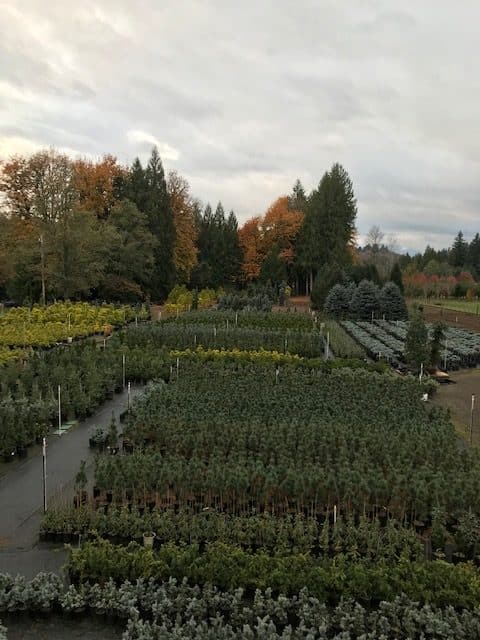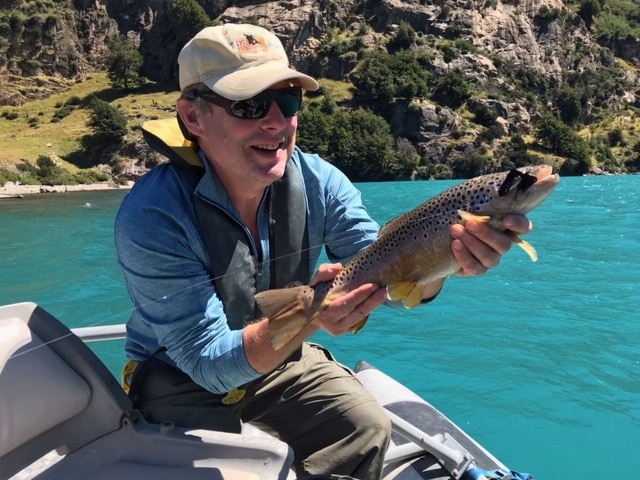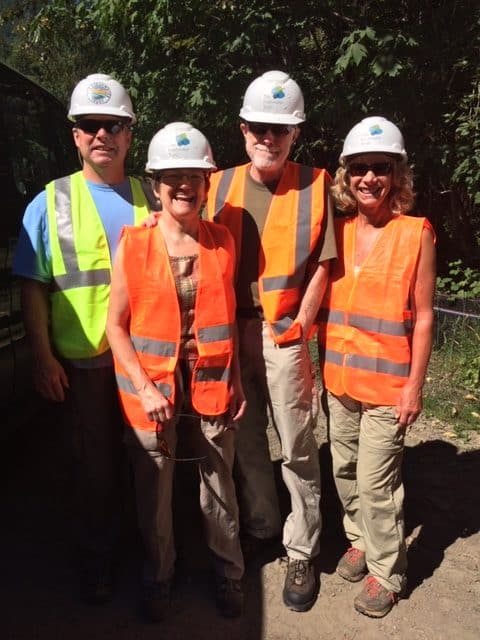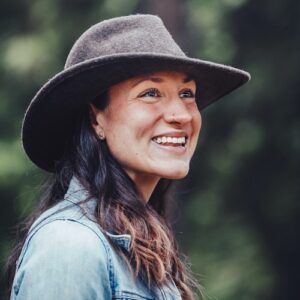Salmon Spotting with Brad Will & Karly Ritter
Longtime supporters and Sandy, Oregon, residents Brad Will & Karly Ritter experience impacts on fish habitat firsthand.
Brad Will has a vivid memory of being five and watching a salmon swim through Still Creek.
“I remember that fish being bigger than us kids,” he said. “We’d go down there all the time with our little fishing poles. It was our backyard.”
It still is. Brad and his partner Karly run the family tree nursery in Sandy, Oregon.
“We are on the same property that my grandparents moved to in 1943,” he said. “We moved out here when my father passed away in 2015, renovated the farmhouse, built a new shop, and are now working the nursery.”

Brad Will and Karly Ritter’s nursery in Sandy, Oregon.
Brad is also still spying on salmon, now with the help of The Freshwater Trust. As longtime supporters of TFT, he and Karly have attended site visits to the same creek he frequented as a child to witness the impacts of TFT’s efforts to improve and restore native fish habitat here.
“It’s amazing to physically see how this place changes so quickly with their work,” he said. “For me, it’s been really special to know that the streams and rivers around here are being put back to the way nature designed them.”

Brad Will on fishing trip.
On tours with TFT, scientists explain how the straightening of rivers and removal of large wood in this area in the 1960s by the Army Corps of Engineers negatively impacted native fish habitat.
“I remember my parents talking about the 1964 floods here and how bad they’d been and then learning from TFT about how the engineers had straightened all the rivers to prevent flooding like that from happening again,” said Brad. “It’s funny how that actually made the situation worse and would need to be reversed for the sake of flooding and fish.”

From left to right: Brad Will, Cathy & Loran Lamb-Mullin, Karly Ritter
TFT staff are proud to show supporters like Brad and Karly the impacts of spending nearly a decade rebuilding large wood structures and reconnecting side channels.
As a testament to the impacts of this work, between 1998 and 2016, the number of spawning salmon and steelhead here has increased 350%.
In 2018, TFT started taking supporters from Portland and the surrounding area to witness the impacts of their support firsthand.
“It’s amazing to learn that a straight river, without meanders or curves, might be pretty but it’s not functional,” said Karly. “It’s also been great to meet the people doing the work on the ground. All of them are so passionate.”
Karly knew of The Freshwater Trust before it was The Freshwater Trust.
“I was introduced to TFT back when it was Oregon Trout by friends who volunteered doing fish counts, and for years, I volunteered at their annual fundraiser,” said Karly. “Since then, our understanding of what the organization does has grown, and we are really impressed with the focus on data and collaboration.”
TFT partners with nearly two dozen government agencies, nonprofits, and foundations to support its work in the Sandy Basin.
“I get really frustrated when I hear organizations say there is a right way and wrong way to do something,” said Karly. “It’s important to me that The Freshwater Trust says, ‘Let’s work on this together.’ In the Sandy Basin, you can actually see the difference that that approach makes.”
Over the past two years, nearly 100 supporters joined TFT staff on field trips. More trips are planned for next summer and fall.
“For me, it’s been really special to see these waters get put back to the way nature originally had designed them,” said Brad. “Mother Nature needs just a little help, and then she usually takes it from there.”
November 20, 2019
#Conservation #native fish #Salmon
Enjoying Streamside?
This is a space of insight and commentary on how people, business, data and technology shape and impact the world of water. Subscribe and stay up-to-date.
Subscribe- Year in Review: 2023 Highlights
By Ben Wyatt - Report: Leveraging Analytics & Funding for Restoration
By Joe Whitworth - Report: Transparency & Transformational Change
By Joe Whitworth - On-the-Ground Action – Made Possible By You
By Haley Walker - A Report Representing Momentum
By Joe Whitworth

